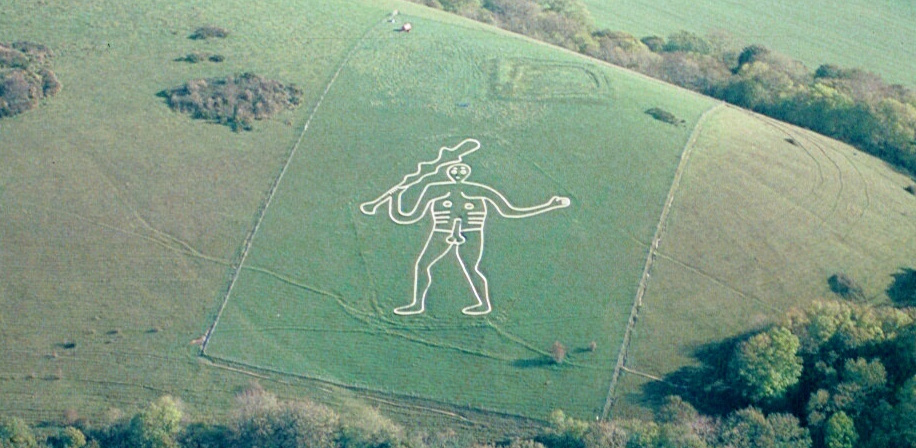
Carved into a hill in Dorset is the Cerne Abbas Giant, a 55-meter nude figure that carries a club and is rather obviously male. In November 1932 the Home Office received a letter from local resident Walter L. Long on which he’d sketched the giant. He wrote:
If this sketch offends, please remember that we have the same subject, representing a giant 27,000 times life size, facing the main road from Dorchester to Sherborne, and only some quarter to half a mile distant.
With the support of the Bishop of Salisbury, another Bishop, and representatives of other religions, I appealed to the National Trust, but this society exists only to preserve that which is entrusted to it, and consequently does not consider the obscenity of this figure is a matter on which I can act. In this figure’s counterpart in Sussex, Sex has been eliminated altogether; the other extreme.
Were the Cerne Giant converted into a simple nude, no exception would be taken to it. It is its impassioned obscenity that offends all who have the interest of the rising generation at heart, and I, we, appeal to you to make this figure conform to our Christian standards of civilization.
Archival records show that the matter was referred to one S.W. Harris, who debated what would satisfy Mr. Long. Should they call the police? Plant some strategic fig trees? He noted that the figure had stood without complaint for two or three thousand years, “or from 1/3 to one half the Biblical age of the Earth.” At last he sent this reply:
With reference to your letter of 14th November, I am directed by the Secretary of State to say that he has caused inquiry to be made and finds that the prehistoric figure of which you complain — the Giant of Cerne — is a national monument, scheduled as such, and vested in the National Trust. In the circumstances the Secretary of State regrets that he cannot see his way to take any action in the matter.
Seven years later Harris shared Long’s letter with a colleague, who wrote of the giant, “He is an old scandal, but he has stood there and scandalised for thousands of years and I hope [he] will do so for thousands more.”
(National Archives, In Their Own Words: Letters From History, 2016.)
